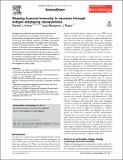Shaping humoral immunity to vaccines through antigen-displaying nanoparticles
Author(s)
Irvine, Darrell J; Read, Benjamin J.
Download1-s2.0-S0952791520300091-main.pdf (572.5Kb)
Publisher with Creative Commons License
Publisher with Creative Commons License
Creative Commons Attribution
Terms of use
Metadata
Show full item recordAbstract
Strategies to qualitatively and quantitatively enhance the humoral response to immunizations with protein and polysaccharide antigens are of broad interest for development of new and more effective vaccines. A strategy of increasing importance is the formulation of antigens into a particulate format, mimicking the physical form of viruses. The potential benefits of enhanced B cell receptor engagement by nanoparticles have been long been appreciated, but recent studies are defining additional important factors governing how nanoparticle immunogens interact with the immune system in the context of lymphoid organs. This review will discuss findings about how nanoparticles enhance humoral immunity in vivo and factors governing the fate of nanoparticle immunogens in lymph nodes.
Date issued
2020-08Department
Ragon Institute of MGH, MIT and Harvard; Massachusetts Institute of Technology. Department of Biological Engineering; Massachusetts Institute of Technology. Department of Materials Science and Engineering; Harvard University--MIT Division of Health Sciences and Technology; Koch Institute for Integrative Cancer Research at MITJournal
Current Opinion in Immunology
Publisher
Elsevier BV
Citation
Irvine, Darrell J. and Benjamin J. Read. "Shaping humoral immunity to vaccines through antigen-displaying nanoparticles." Current Opinion in Immunology, 65 (August 2020):pp.1-6. © 2020 The Authors. https://doi.org/10.1016/j.coi.2020.01.007
Version: Final published version
ISSN
0952-7915
1879-0372